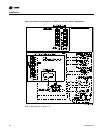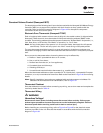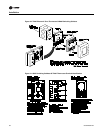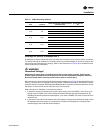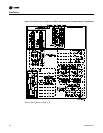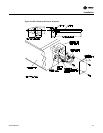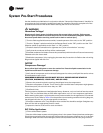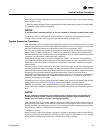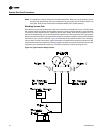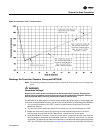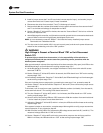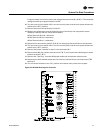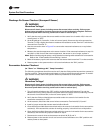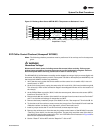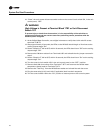
SS-SVX09A-EN 69
System Pre-Start Procedures
before filling with water to displace any air in the barrel. Close vent ports or replace the vent plug
after purging or filling.
[ ] Once the system has been filled, inspect the entire chilled water piping system for leaks. Make
any necessary repairs before proceeding.
NOTICE
To avoid possible equipment damage, do not use untreated or improperly treated system water.
[ ] Inspect the interior of the unit for tools and debris in preparation for starting the unit and
complete the remainder of the “Pre-start” procedures before starting the unit.
System Evacuation Procedures
Each refrigeration circuit for split system applications must be evacuated before the unit can be
started. Use a rotary type vacuum pump capable of pulling a vacuum of 100 microns or less. Verify
that the unit disconnect switch and the system control circuit switches are “OFF”.
The oil in the vacuum pump should be changed each time the pump is used with a high quality
vacuum pump oil. Before using any oil, check the oil container for discoloration which usually
indicates moisture in the oil and/or water droplets. Moisture in the oil adds to what the pump has
to remove from the system, making the pump inefficient.
When connecting the vacuum pump to a refrigeration system, it is important to manifold the
vacuum pump to both the high and low side of the system (liquid line access valve and suction line
access valve). Follow the pump manufacturer’s directions for the proper methods of using the
vacuum pump.
The lines used to connect the pump to the system should be copper and of the largest diameter
that can practically be used. Using larger line sizes with minimum flow resistance can significantly
reduce evacuation time. Rubber or synthetic hoses are not recommended for system evacuation
because they have moisture absorbing characteristics which result in excessive rates of
evaporation, causing pressure rise during the standing vacuum test. This makes it impossible to
determine if the system has a leak, excessive residual moisture, or a continual or high rate of
pressure increase due to the hoses.
An electronic micron vacuum gauge should be installed in the common line ahead of the vacuum
pump shutoff valve, as shown in Figure 34. Close Valves B and C, and open Valve A.
Start the vacuum pump, after several minutes, the gauge reading will indicate the maximum
vacuum the pump is capable of pulling. Rotary pumps should produce vacuums of 100 microns or
less.
NOTICE
Do not, under any circumstances, use a megohm meter or apply power to the windings of a
compressor while it is under a vacuum. Electrical shorting between motor windings and/or
housing can occur while in a vacuum, causing motor burnout.
Open Valves B and C. Evacuate the system to a pressure of 300 microns or less. As the vacuum is
being pulled on the system, there could be a time when it would appear that no further vacuum
is being obtained, yet, the pressure is high. It is recommended that during the evacuation process,
the vacuum be “Broken”, to facilitate the evacuation process.
To break the vacuum;
Shutoff valves A, B, & C and connect a refrigerant cylinder to the charging port on the manifold.
Purge the air from the hose. Raise the standing vacuum pressure in the system to “zero” (0 psig)
gauge pressure. Repeat this process two or three times during evacuation.




